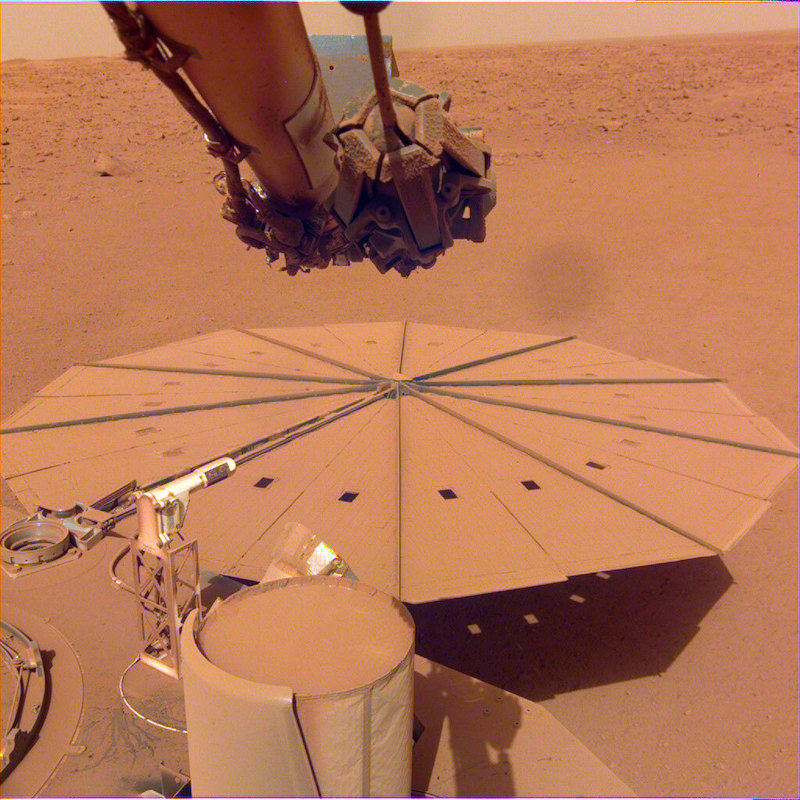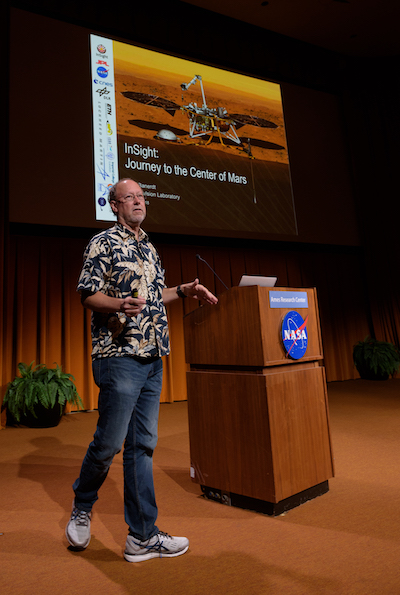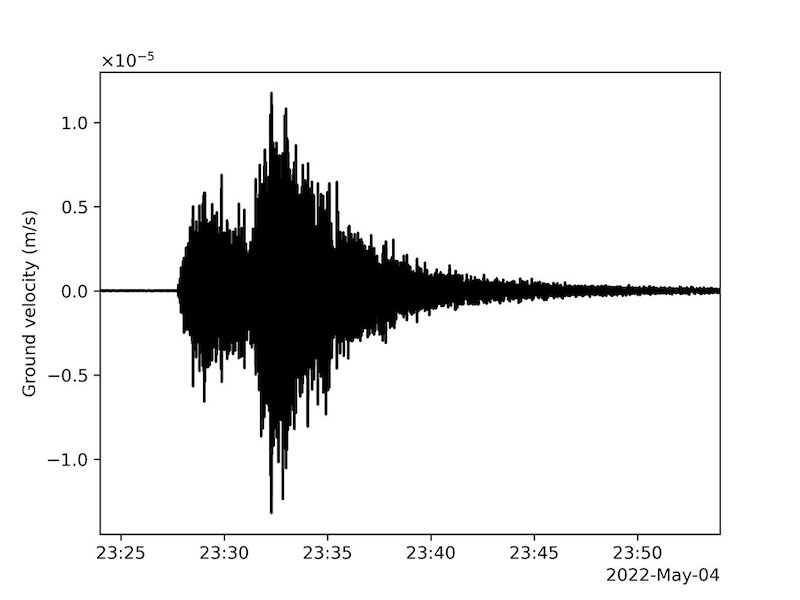
InSight mission to wind down
Yesterday morning, we passed you some news from NASA’s InSight mission on Mars: biggest recorded marsquake yet. Then yesterday afternoon (May 17, 2022), NASA announced some additional news. It looks like the end is near for InSight. The lander has been there since 2018. But now dust has accumulated on its solar panels. And InSight is gradually losing power. Mission scientists said on Tuesday they expect science operations to come to an end this summer. The lander will then become completely inoperative by December.
Sadly, it looks like the end is nigh for NASA’s mission on Mars. The lander has been studying Mars’ subsurface since it landed in 2018. But now, thanks to accumulating dust on its solar panels, InSight is gradually losing power. And as we know, Mars is a very dusty place. Mission scientists said on Tuesday that they expect science operations to come to an end this summer. The lander will then become completely inoperative by December.
As NASA tweeted on Tuesday:
As my power levels diminish due to dust on my solar panels, my team has set my retirement plans in motion. Plans call for a gradual shutdown of instruments, including resting my arm in a “retirement pose.”
Read more: https://t.co/eATDXbOlx2 pic.twitter.com/OsbsufAvmi
— NASA InSight (@NASAInSight) May 17, 2022
And in another tweet:
Power levels are diminishing for @NASAInSight.
Dusty solar panels and darker skies are expected to bring the mission to a close at the end of the year. Since landing on Mars in 2018, InSight has provided invaluable info on the inner workings of the planet: https://t.co/mMSCHtLFnI pic.twitter.com/ckc49h19Pv— NASA JPL (@NASAJPL) May 17, 2022
NASA also held a media teleconference update on the status of InSight on May 10, 2022.
Meanwhile, as previously reported by EarthSky, InSight continues to detect marsquakes – the equivalent of our earthquakes – with over 1,300 recorded so far. The largest one, magnitude 5.0, was detected on May 4, 2022.
Accumulating dust
InSight has the same liability as some other landers and rovers; it uses solar power. It depends on its solar panels to generate enough power to keep warm and maintain all its instruments. Indeed, it has done so quite well, so far. But now, increasing dust has built up on the solar panels to the point that they are gradually losing power. Watch the video below for more details:
At the beginning of the mission, the solar panels generated 5,000 watt-hours each Martian day, or sol. That is enough to power an electric oven for an hour and 40 minutes. But now, they’re only producing about 500 watt-hours per sol. That’s enough to power the same electric oven for just 10 minutes.
Retiring the robotic arm
As a result of having less power, the mission team will soon retire the lander’s robotic arm from service. It will be used for the last time sometime later this month. Previously, the team was able to use the arm to remove some dust from the solar panels by “by trickling sand in the wind,” but that is no longer an option.
The arm was designed primarily to deploy InSight’s seismometer and “mole” heat probe. When the heat probe didn’t dig down deep enough into the ground as expected – after many attempts – the mission team used the arm to bury it in the soil, instead.
Seasonal changes
It’s a bad time of the year for dust in InSight’s landing location, Elysium Planitia. In fact, dust levels will now keep increasing over the next few months. At this point, a much more robust dust-cleaning event would be needed, such as a dust devil. Indeed, dust devils helped clean the solar panels of both the Spirit and Opportunity rovers. That could happen with InSight as well, but mission scientists seem to think it is unlikely.
As Bruce Banerdt, InSight’s principal investigator at NASA’s Jet Propulsion Laboratory (JPL), stated:
We’ve been hoping for a dust cleaning like we saw happen several times to the Spirit and Opportunity rovers. That’s still possible, but energy is low enough that our focus is making the most of the science we can still collect.

Prioritizing energy on InSight
As of now, the seismometer is being given the priority in terms of science instruments. It still operates at various times of day and night. It does so when winds are at their weakest, allowing it to detect the faint marsquakes more easily.
Marsquakes galore
During its mission, InSight has recorded over 1,300 marsquakes. This is evidence that the planet is still geologically active beneath the surface. The biggest marsquake detected so far is magnitude 5.0. That’s a medium quake on Earth, but it’s impressive for Mars. After all, Mars lacks plate tectonics, the process that, on Earth, shifts land plates around, building mountains and creating most earthly volcanoes and earthquakes.
The previous largest marsquake recorded by InSight had measured 4.2, which is very mild by earthly standards.


In another NASA tweet:
I made the most of my time listening intently as Mars shed some of its secrets, including detecting more than 1,300 quakes.
Read more science highlights: https://t.co/vy04a5yXPX
Send me and my team a postcard: https://t.co/okiQTHpmOo pic.twitter.com/iF0KwANF80
— NASA InSight (@NASAInSight) May 17, 2022
InSight’s mission has two main goals: to understand the formation and evolution of terrestrial planets through investigation of the interior structure and processes of Mars, and determine the present level of tectonic activity and meteorite impact rates on Mars.
The mission has transformed our understanding of Mars’ interior geology as never before. According to Lori Glaze, director of NASA’s Planetary Science Division:
InSight has transformed our understanding of the interiors of rocky planets and set the stage for future missions. We can apply what we’ve learned about Mars’ inner structure to Earth, the Moon, Venus, and even rocky planets in other solar systems.
Bottom line: NASA announced on Tuesday that it is winding down the InSight lander mission on Mars, due to increasing dust on its solar panels. Science operations will end this summer, with full mission shutdown by this winter.











